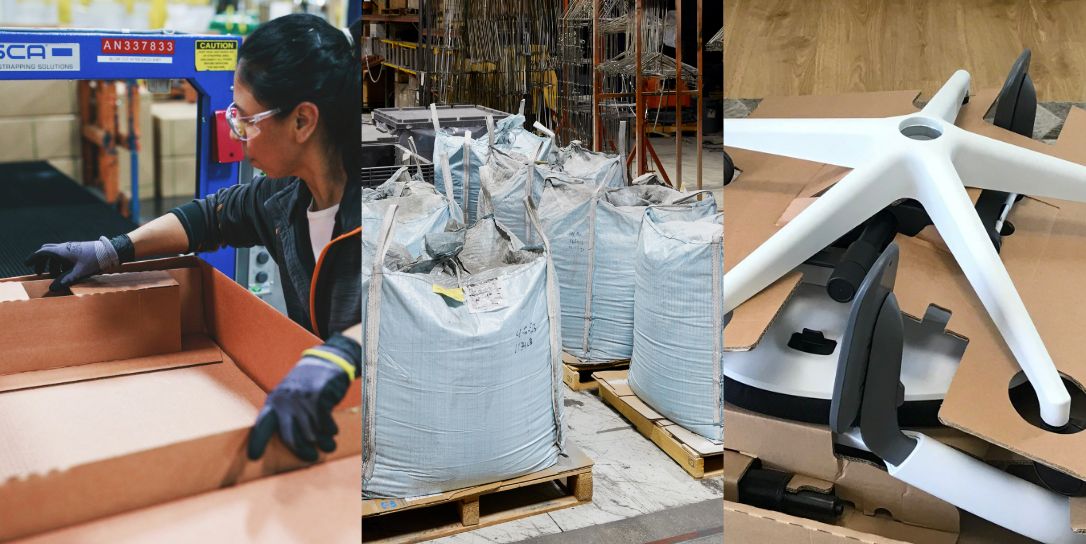Every Week Is Earth Week: How Collective Actions Protect the Planet
Three new programs demonstrate ways to keep waste out of landfills, use materials responsibly and reduce carbon footprints.
Each day, we’re flooded with urgent calls to climate action and many of the answers are often difficult to grasp. It can all feel overwhelming – the search for solutions, daunting. For example, the U.S. Environmental Protection Agency reports more than 12 million tons of furniture is dumped into landfills each year, while only 0.33% is recycled.
One contributor to this crisis is ‘fast furniture’ – cheap and ultimately disposable desks and chairs that grew in popularity during the pandemic. Much like ‘fast fashion,’ it is not designed to last. Not only are the final products ending up in landfills, but the packaging and scrap created during the manufacturing process contributes to more waste and more carbon emissions from production and shipping.
No Single – or Simple – Solution
There’s no one answer and no single source of accountability. Everyone who works with the built environment – manufacturers, designers, regulators, suppliers and consumers – will need to work together to reduce carbon emissions. Progress requires industry-wide efforts, energized people and collaboration with global partners. Collective action goes beyond any one organization, and starts with helping suppliers reduce their impact on the planet while working to meet evolving customer sustainability requirements. The ripple effect grows exponentially with each positive change. Targets surrounding the manufacturing process and resulting waste is an area where Steelcase and our partners can help make progress toward a better future for our planet.
“Our goal is to share what we’re learning as we work toward a better future for the planet”, says Mary Ellen Mika, global director of sustainability for Steelcase. “We have a targeted approach which focuses on three key areas: reducing our carbon footprint, designing for circularity and choosing and using materials responsibly.”
Three new initiatives demonstrate how Steelcase is working with suppliers, partners and dealers to help our customers and reduce our impact on the planet.
Reducing Waste in Product Packaging
Steelcase is designing new ways of protecting its products in shipping to meet its goal of eliminating single-use plastics in packaging by 2030. Steelcase operations teams in the U.S. and Europe are bringing the organization closer to our 2030 goal while also saving money and reducing emissions from shipping products.
In the U.S., a cross-collaborative workshop known as ‘Hack the Pack’ resulted in reconfigured packaging for the Steelcase Verb table which eliminates the use of protective foam blocks in favor of easy-to-recycle cardboard.
The impact is significant:
- 73,000 pounds of not readily recyclable styrofoam eliminated from landfills per year
- Smaller pack size means 15% more cube space for shipping, allowing for more products on each shipment
- 10 fewer truck loads of delivery per year
Customers benefit with faster unpacking during install and quicker clean up, more space efficiency and lower disposal costs.
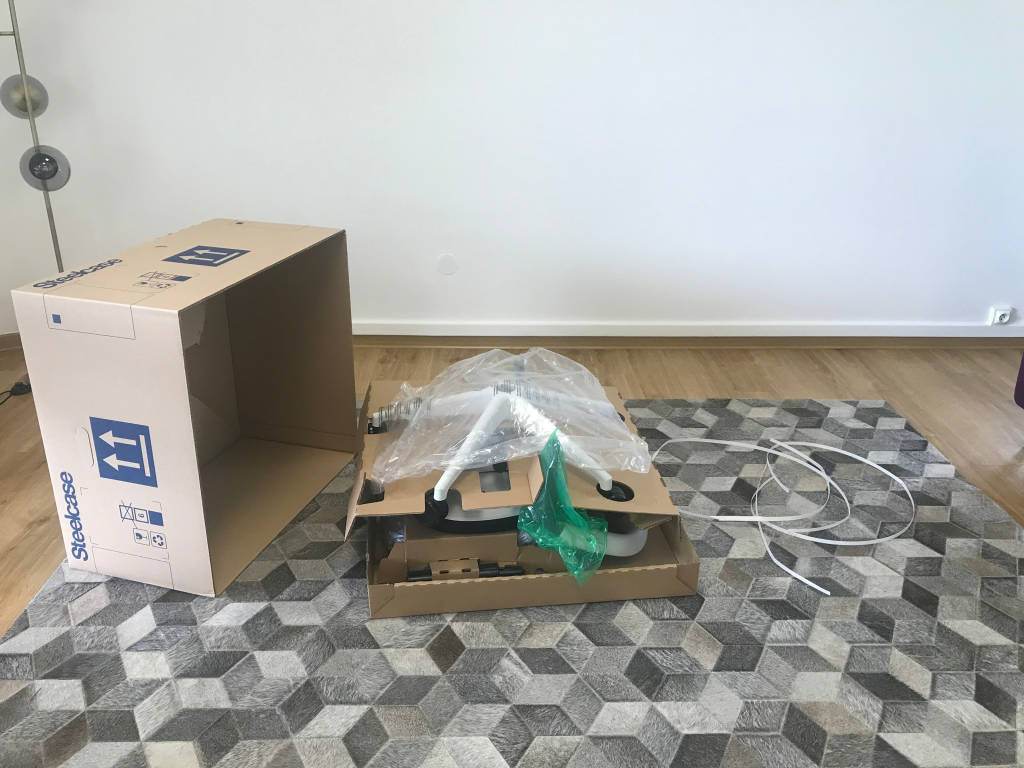
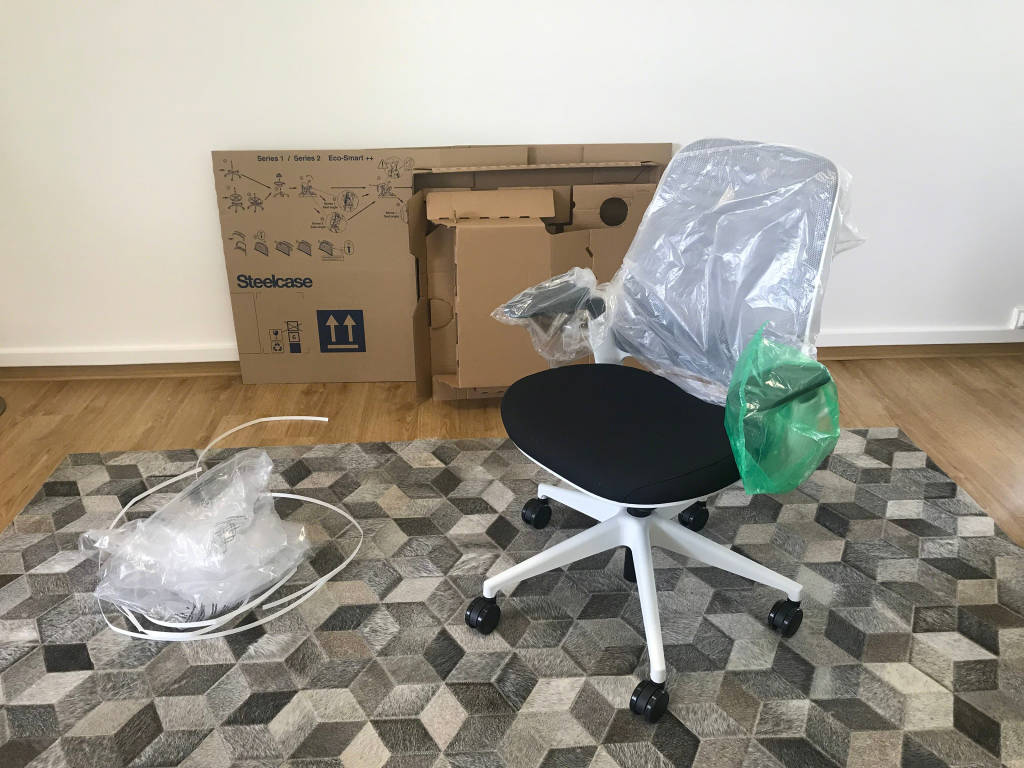
The Series 1™ chair with CarbonNeutral® product certification with protective plastic wrapping.
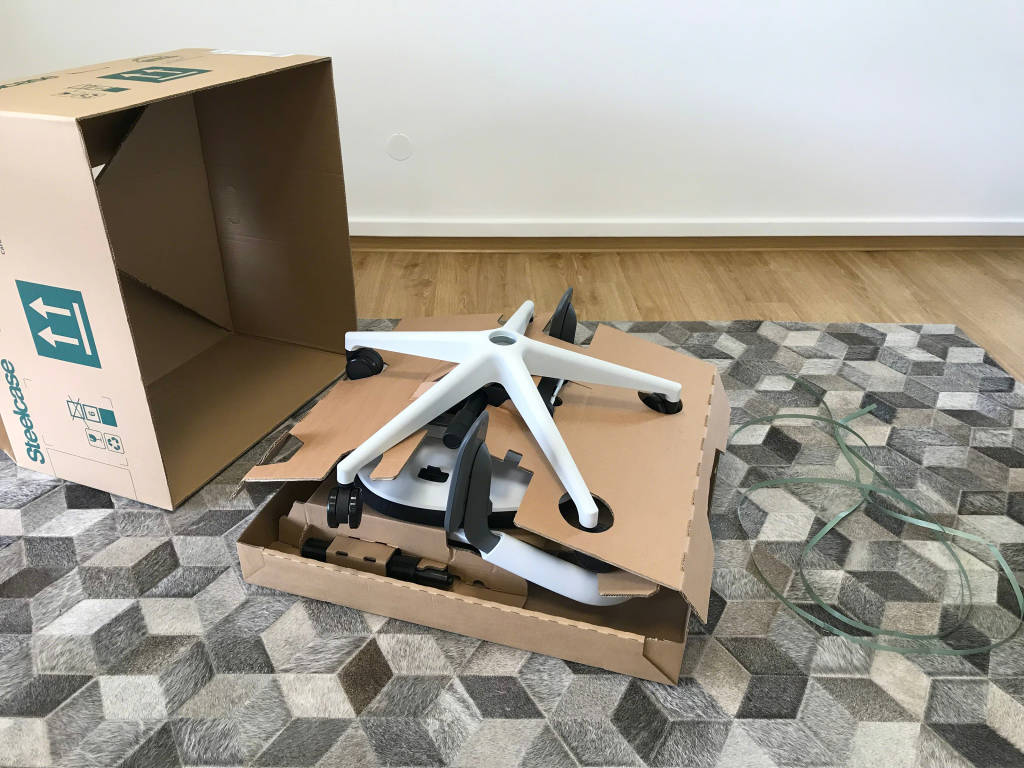
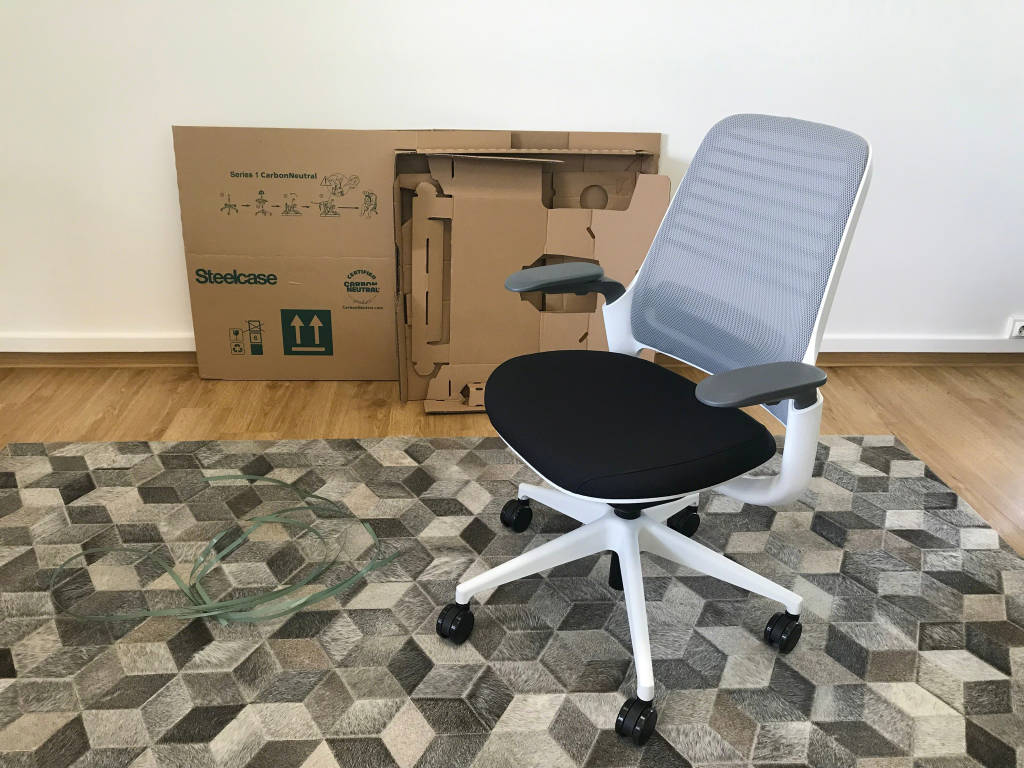
The reconfigured packaging with all recyclable-treated cardboard.
Cross-functional teams in Europe identified an opportunity to eliminate plastic wrap in our CarbonNeutral® product certified Series 1 chair packaging while maintaining the same packaging quality. Recycled cardboard featuring a smooth, non-abrasive natural varnish replaces the protective plastic wrap while still being recyclable. Even the polyester straps on the box are improved, now made of 90% recycled material. Like the Verb table, this reconfigured packaging improves truck space utilization, so less trucks are required, which helps reduce carbon emissions. This nearly plastic-free packaging will be extended soon to all Series 1 chairs manufactured in the Sarrebourg, France facility with all other chairs planned to follow.
Office Refresh. Zero Landfill Waste.
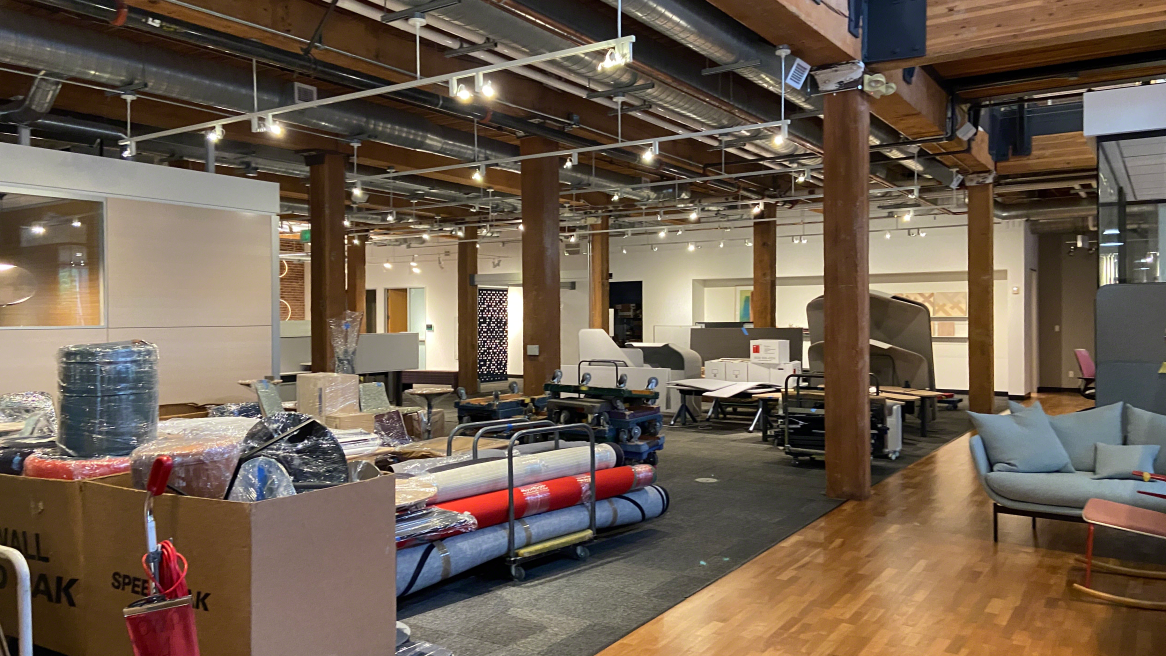
In California, the team refreshing the Steelcase San Francisco WorkLife Center diverted more than 22 tons of debris away from the landfill by donating, recycling or relocating 100% of all the removed furniture.
WorkLife leaders found themselves confronting the same dilemma as their clients – updating an office at a potential cost to the environment. In many cases, Steelcase connects clients to Green Standards – a global sustainable decommissioning firm that redistributes furniture, fixtures and equipment. The San Francisco team worked with Green Standards and experienced firsthand what customers experience during the process. The project benefitted six area schools and nonprofits, as well as dealer partners who repurposed some of the pieces.
Green Standards results:
- 100% of removed furniture (22.2 tons) diverted from landfill
- 72.5% relocated
- 14.4% recycled
- 13.1% donated
“While it took hard work and determination to meet our goal of 100% landfill diversion, it’s incredibly fulfilling – not only to see local beneficiaries find a new and very deserving home for our items, but now we can be a much stronger partner for our customers as we guide them through their own sustainable decommissioning project,” says Steelcase Applications Consultant Laura Crosby.
Paint With a Purpose
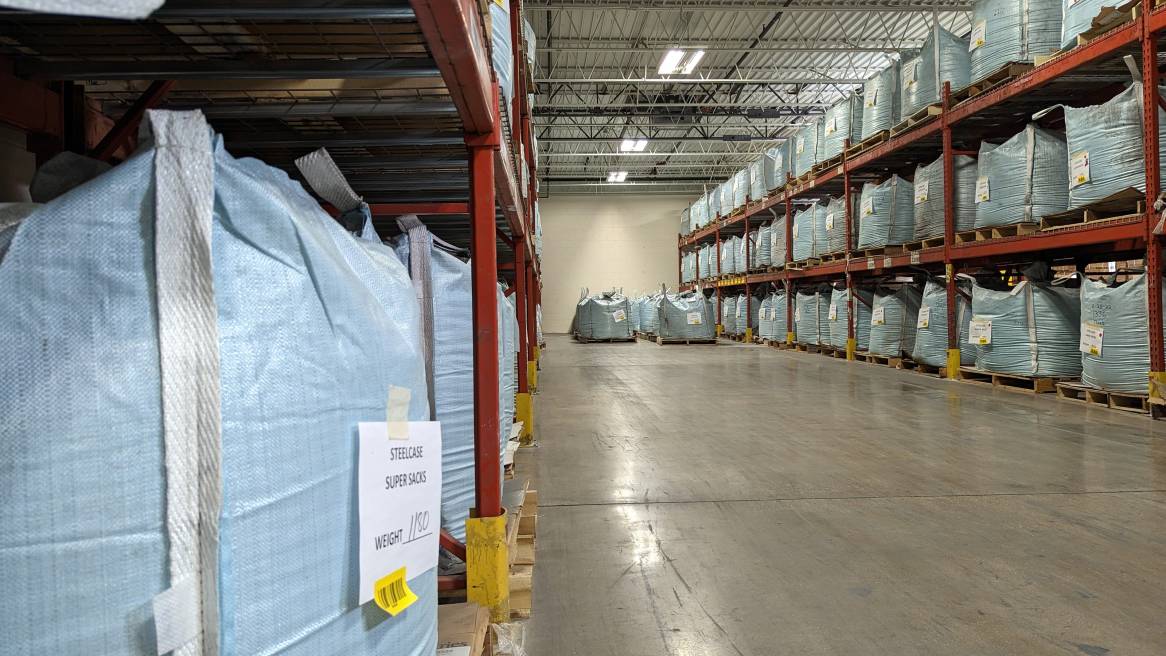
“What started out as a project to launch new paint colors with recycled content evolved to be a project aimed at reducing the amount of paint waste we generate,” says Andrew Roman, surface materials project manager.
Andrew is part of the team that worked to reduce the amount of powder coat paint waste being thrown away each year. For many years, reclaimed powder coat paint has been used on the unseen parts of products. Recently, the team started working with PPG, a key paint supplier to figure out how to reclaim even more powder coat paint and reuse it on parts of Steelcase Answer junctions. The result eliminated 97,000 pounds of paint waste from being sent to the landfill on an annual basis – a total landfill reduction of 91%.
“We’re really empowered by our leaders to change course. That is the type of progress that gets me excited for our future as a company,” says Roman.
Better Futures for Our Planet
Learn how Steelcase can help you achieve your sustainability goals and connect to product environmental data.

